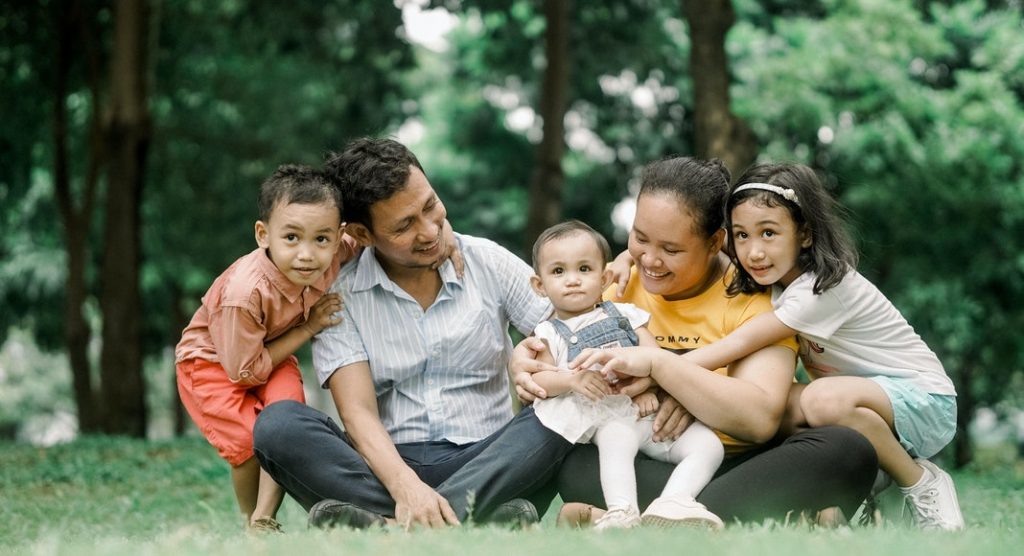 As parents, we worry a lot about keeping our kids safe. As they head back into school and participate in safety drills and procedures, there are things we can do and conversations we can have with our children to ease their anxieties. We posed some questions on this very topic to Doug Parisi, Director of Training at SafeDefend.com and got some great advice.
As parents, we worry a lot about keeping our kids safe. As they head back into school and participate in safety drills and procedures, there are things we can do and conversations we can have with our children to ease their anxieties. We posed some questions on this very topic to Doug Parisi, Director of Training at SafeDefend.com and got some great advice.
SFBAM: When children see or hear about violence in their communities, as parents, we need to be able to have age appropriate conversations with them to help them process what they are seeing and hearing. What are some conversations starters or things we should make sure we talk about to children at all ages?
Preschoolers
DOUG: Younger children are more resilient when dealing with trauma. When they see something that is extraordinary, they might have questions. What they are seeking is reassurance. You should emphasize simple aspects that they can comprehend. Let them know the buildings are kept locked to keep out the wrong people. Assure them that parents in the building are committed to protecting them. Most importantly tell them they can talk to you (the parents) or other adults in their life if things are scary. Don’t shut them down. It only prevents them from dealing with the issues.
Elementary kids
DOUG: Elementary kids are inquisitive by nature. They often know more than we realize. They will hear things in schools and bring them up to their caregivers. Make sure to engage these conversations in a confident manner. They should be told that schools are safe and that the police are there to help. They need to be reminded that listening to the teacher in a crisis is critical. Also, when you speak of school drills tell your children to take them seriously. These drills are not a time for horseplay and mischief. Tell them you will support them when they speak up.
Middle schoolers
DOUG: At this level of education the news and information they receive is beyond the control of parents. These kids understand perspective. When something happens you should try and learn enough that you can explain to them a bit about why it happened. If you get an email about something that happened at school it is a good indicator you need to have a conversation with your kids about it. When they hear the reasons behind events they can start to process the same type of situation in their life. Seeing the horrible outcomes of bullying might make them more prone to standing up for the meek. Knowing that certain actions resulted in escaping harm will enforce the idea that repeating those steps can lead them to safety. At Marjory Stoneman Douglas (Parkland) High School not a single student was injured on the second floor because they were quiet and in the safer corners. The third floor students were not as fortunate. Assure them that drills work.
High schoolers
DOUG: Students at this level need to be confronted with reality. They are at a level where the dangers of the real world are present in their schools. Issues like human trafficking, sexual abuse, drugs, school violence, and criminal activity are prevalent in high schools. Children should be aware of these issues and understand the psychological components that play into them. A desire to fit in, feelings of inadequacy, unrequited love, retribution, and peer pressure can all overwhelm a child. When they understand these things are real they are more prepared to deal with someone that might try and manipulate them. Just as important as convincing them to share information with adults about these topics is the need for adults to take them seriously and investigate allegations. We can have confidence
in our kids to do the right thing but if they see that we don’t follow up and do the right thing then the bond of trust is broken.
SFBAM: As more and more of our kids head back into the classroom, safety drills will be back into their lives. What tips should I give my children that would compliment what the schools are doing?
DOUG: The most important thing to tell children is to reassure them that the school and teacher have a plan. They know what is the best thing to do. Experts have reviewed the plans and formulated them to accommodate the environment. Your children should be told to listen to the teacher and not do their own thing. Younger children need to get to the safer corner quickly so the teacher can focus on turning out the lights, securing the door and creating a barricade. It is imperative that children know to be as quiet as possible. This will prevent them giving away their location and allow the teacher to hear what is going on outside the classroom.
SFBAM: Do schools post their protocols? I suppose that might be counter intuitive – to have it out in public, but how can I support my child, the teacher, and the school?
DOUG: Most schools are exempt from making their protocols public. Some states make it illegal to post. That being said there are no secrets. Most schools will look to secure the classroom, exit the building if practical and have discussed with teachers how to protect the threshold. It is not practical to instruct teachers to attempt to neutralize an armed intruder so if you hear that happening it was a personal choice by the staff member. There is no evidence that discussing plans with students compromises safety. It is impossible to have
students drill without knowing the plan. The attacker knows they are in the building so a public announcement should be made to secure the building and alert authorities. Prudence tells us that if we know we are under threat we can take steps to mitigate harm. We do it with fire and weather emergencies.
SFBAM: As more and more people are out and about and we slowly return to pre-pandemic lives – what are some of your key tips for keeping our children safe? It seems like we need to have refreshers on some of these things.
DOUG: One thing that people need to do is to become more informed. As we get out we need to be aware that society has changed. The news will tell us what areas are experiencing concerning events. If you are headed to a festival or event you should look and see if there are any alerts such as scheduled protests or warnings. Unfortunately, we have seen several parades, public parks, commercial venues, and public streets that have turned into zones that are under limited control. It is best to be aware of the activities
you might encounter and have developed a plan to address an uncomfortable situation.




















